I spent the best 5 weeks of my life solo traveling across Ghana to learn about Ghanaian food, culture and history. In this post, I will give a detailed breakdown of my trip to Ghana, focusing on northern Ghana (Northern Region, Savannah Region, Upper East Region). I will be including transport, accommodation and activities at each location with details about guides and everything I did to have a fantastic time in Ghana. For my southern Ghana itinerary, check out this post. For details on everything you need to know when planning your trip to Ghana, make sure to check out this blog post, which covers information on flights, visas, vaccines and money.
Northern and Savannah Region
Northern Ghana feels like a very different country. It is quieter, dryer and less densely populated. The people of Northern Ghana speak a different branch of Niger-Congo languages that are distinct from what you find in Southern Ghana.
Tamale
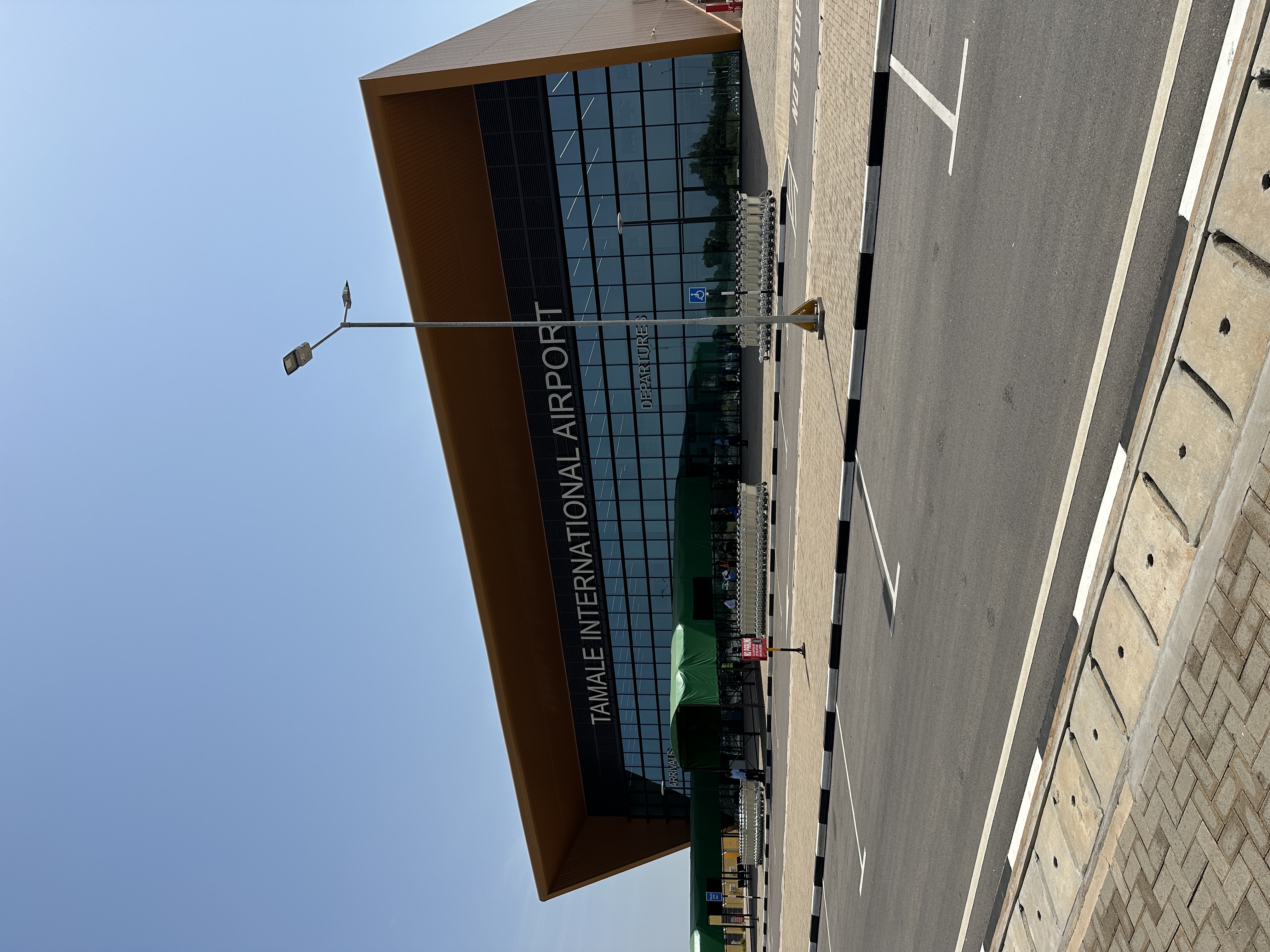
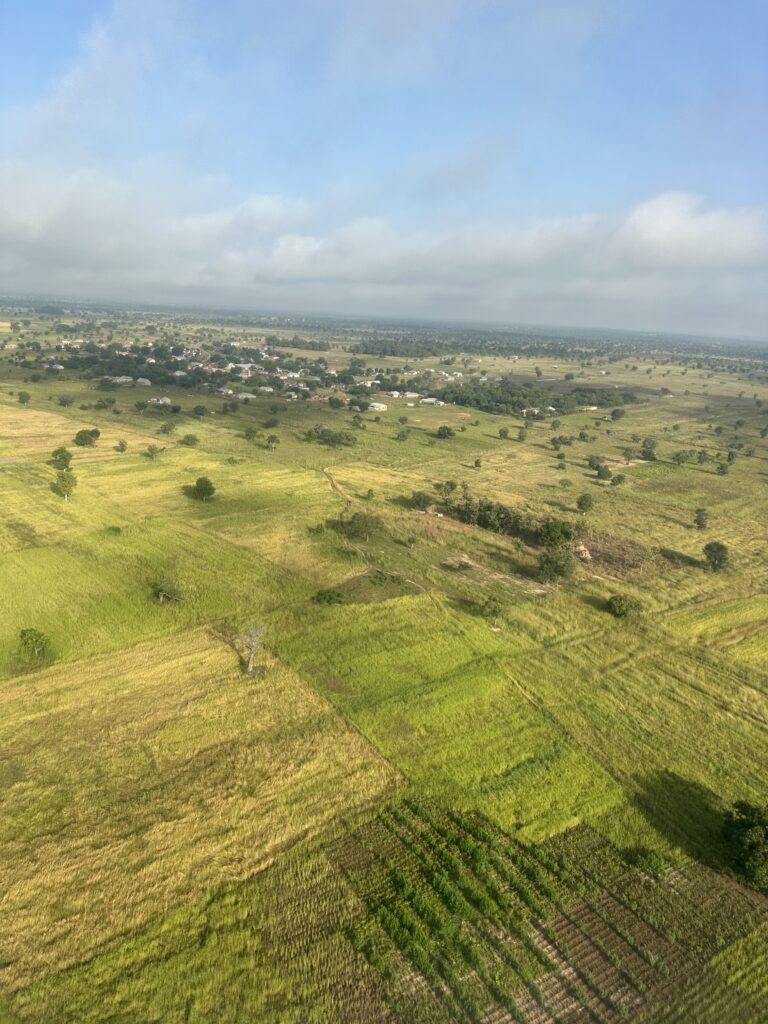
For this trip, we flew into Tamale International Airport which is located on the outskirts of Tamale. The first order of business was breakfast. Something you will learn quickly in Ghana is that breakfast can mean very different things to different people so we ate a lot of different things for breakfast. Fermented corn or millet porridge is very popular as well as yam fufu, tuo zaafi or even beans.

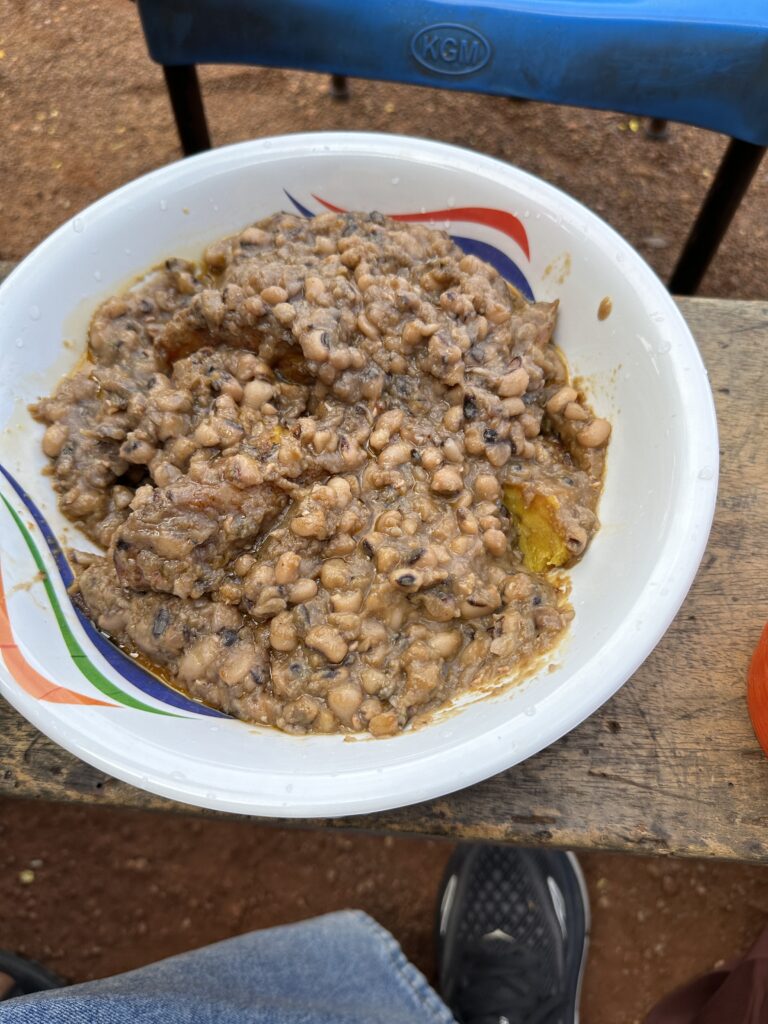

Cooking Class
After breakfast, we took a tour of the central Tamale market. The market was quite clean and not many people shouting at you. I managed to buy a smock for myself and boyfriend which our driver kindly bargained for me. From the market, I partook in a traditional cooking class with Amina. Amina is very passionate about preserving traditional Dagomba cooking ways and ingredients. We cooked banku made with fermented cassava and red millet served with okro soup and matunya (dried okro and beans soup). Northern Ghanaian food, like southern Ghana, is a product of what is available to people. Given the dry weather and temperature in northern Ghana, a lot of foods are consumed both fresh and dried (to last the year).
Also given their distance from the coast, northern Ghanaians have maintained more of their traditional cuisines as products like corn and cassava, although important ingredients, have not largely replaced grains like millet or sorghum as they have in the south. The north is also known to have a very healthy and plant-forward diet with most soups and stews traditionally cooked with small amounts of fish for flavour. I had an incredible time with Amina who offers cooking classes.
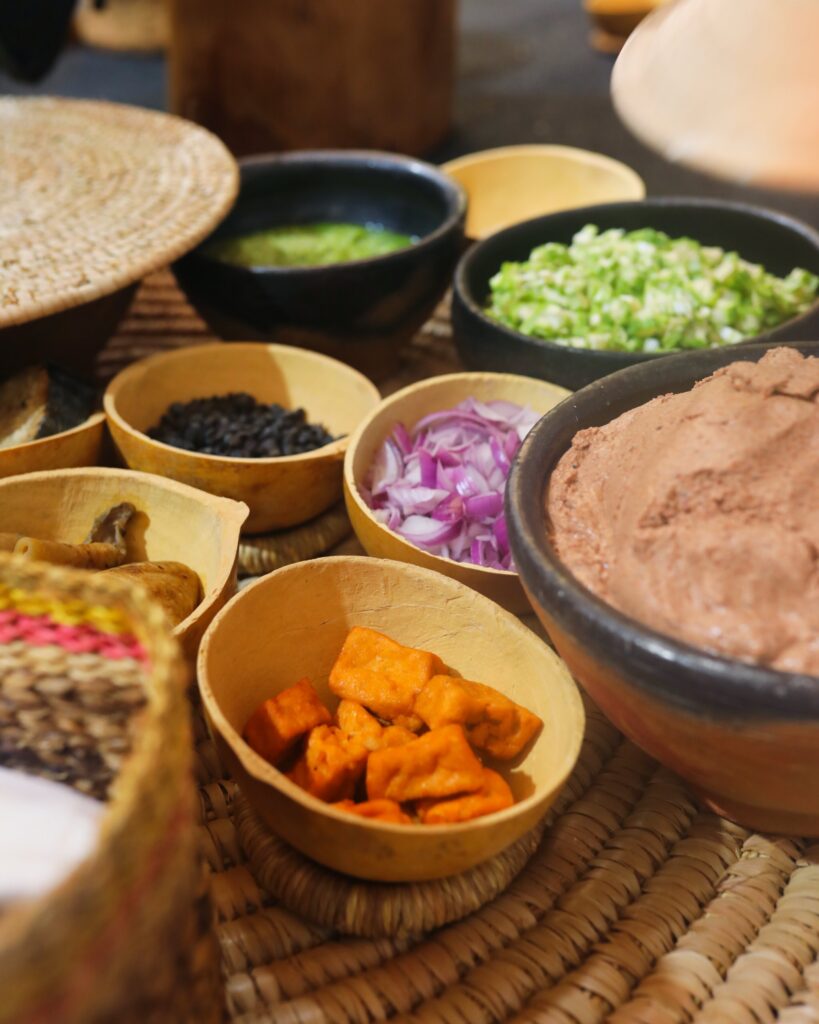
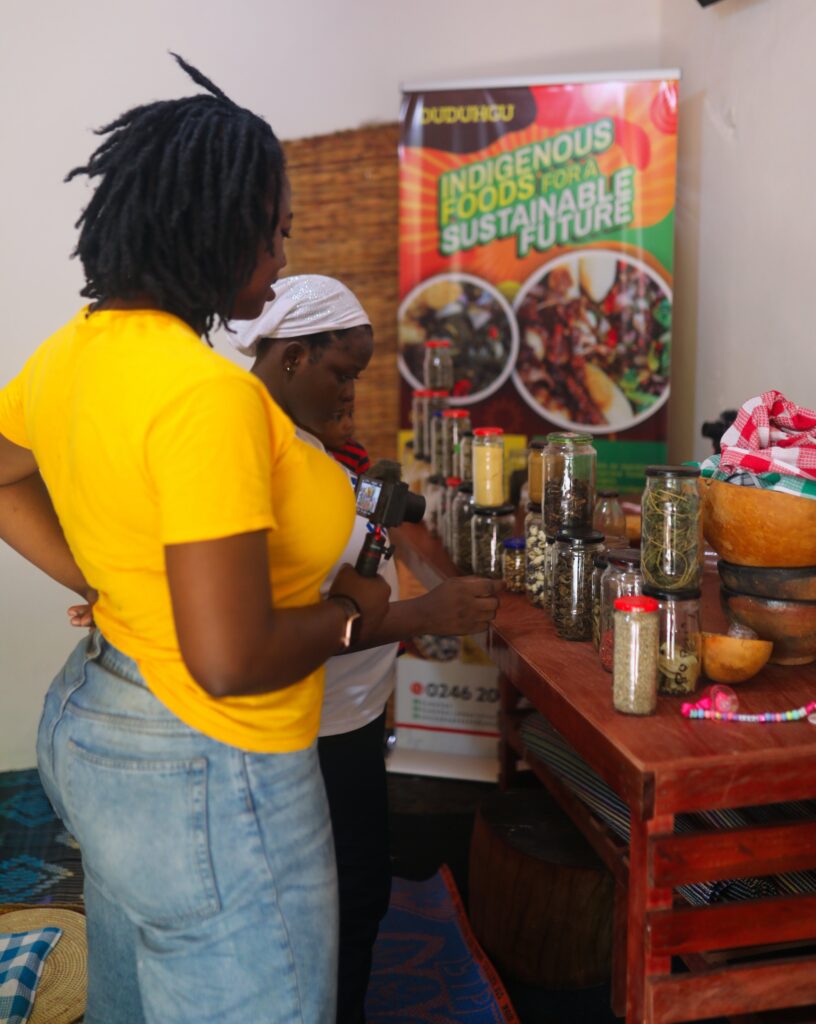
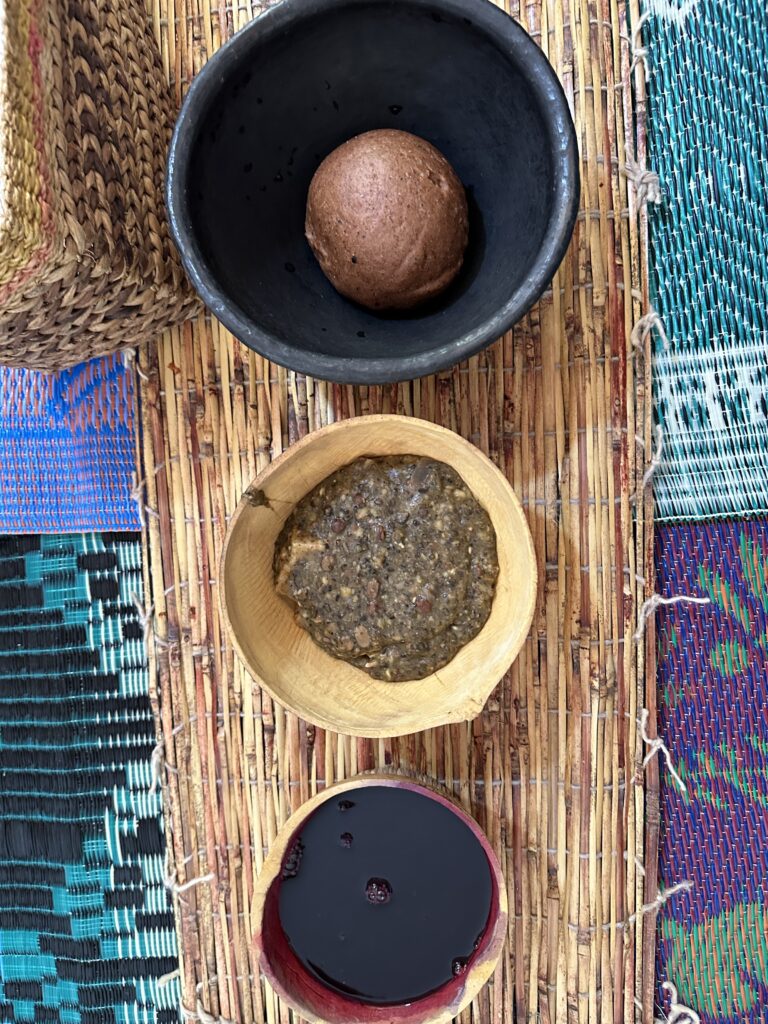
Larabanga and Mole
From Amina’s workshop, we drove three hours to the Savanah region which is west of Tamale. The roads were bare and the scene was amazing. As the weather was transitioning from the rainy season to harmattan, the landscape still had lush greenery and it was so beautiful. We traversed traditional homes, and the White Volta River before we made it to Larabanga, our final destination for the day. We took a tour of the town which is inhabited by the Kamera people and the location of one of the oldest mosques in West Africa. The Larabange mosque, designed in the Sudan style, holds spiritual and historical importance to the people. The people in the town maintain the mosque and provide tours of the area. The mosque is only a few kilometres from Mole National Park and is full of history. I highly recommend visiting the mosque if you want to visit the park because you get more insights about the land and the community from the Kamera people than you would from the park rangers at Mole.
We spent the night at a guest house in the town before heading on a safari the following day.
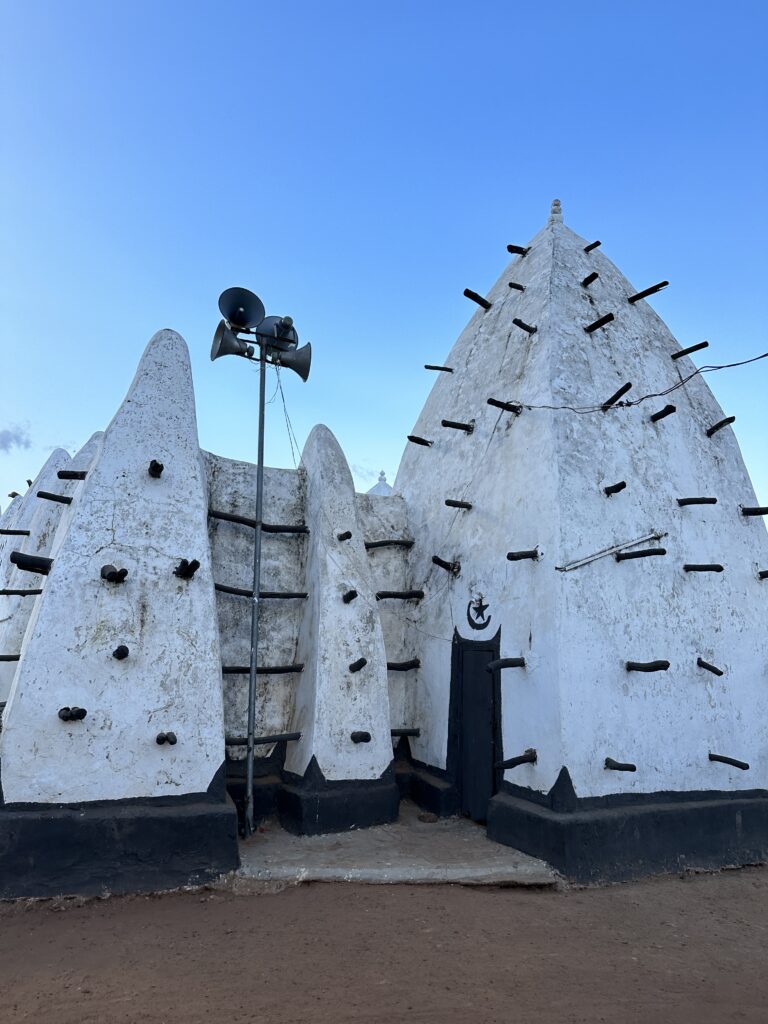
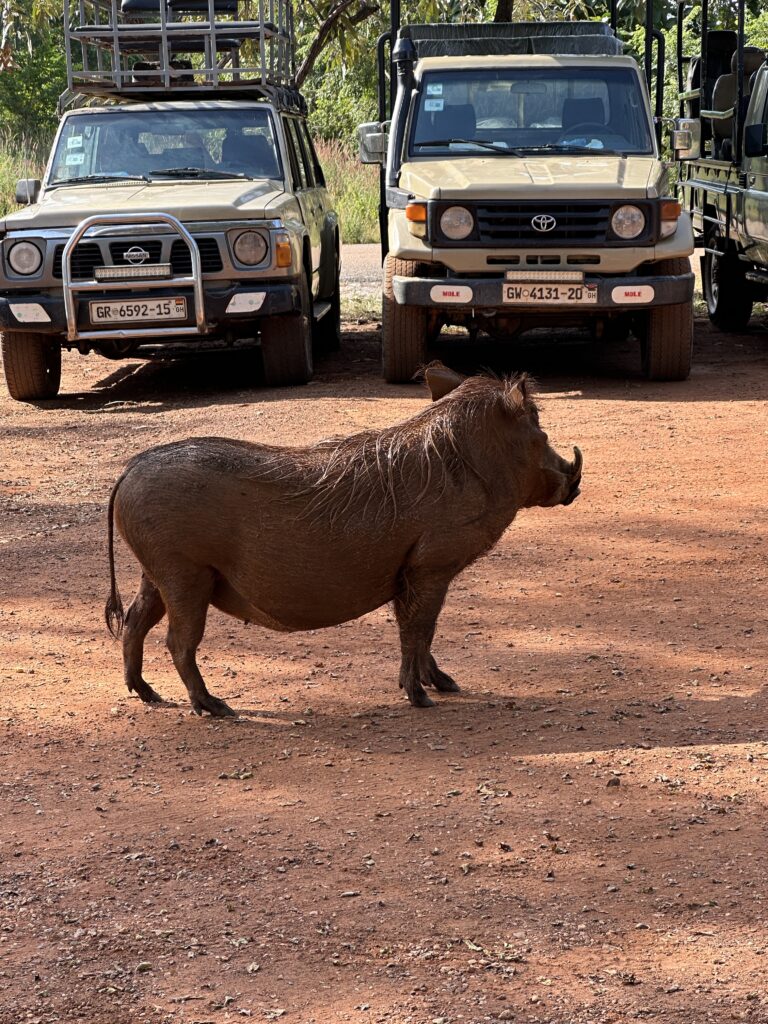
Mole National Park is the biggest protected park in Ghana. It spans three regions of the country and is known for its elephants, which we unfortunately did not get to see. Given we visited at the end of the rainy season, the park was lush with greenery which meant good cover for the park animals. The best time to visit the park is at the end of March at the peak of the dry season. Although incredibly hot, there will be no greenery to hide the animals so you will see everything.
After Mole, we returned to Tamale but made sure to stop for a local meal. Our driver prefers starting his day with yam fufu and light soup to fill his belly for the day but I opted for the tuo zaafi with groundnut soup with pumpkin leaves. It was super delicious and plant-based too as meat is usually sold and cooked separately. We also visited the Red Clay Studio by Ibrahim Mahama which has incredible installment. The studio is made with clay which keeps the place very cool. The art work is basically the repurposing of discarded itens during and after colonialism, reframed to tell local stories.
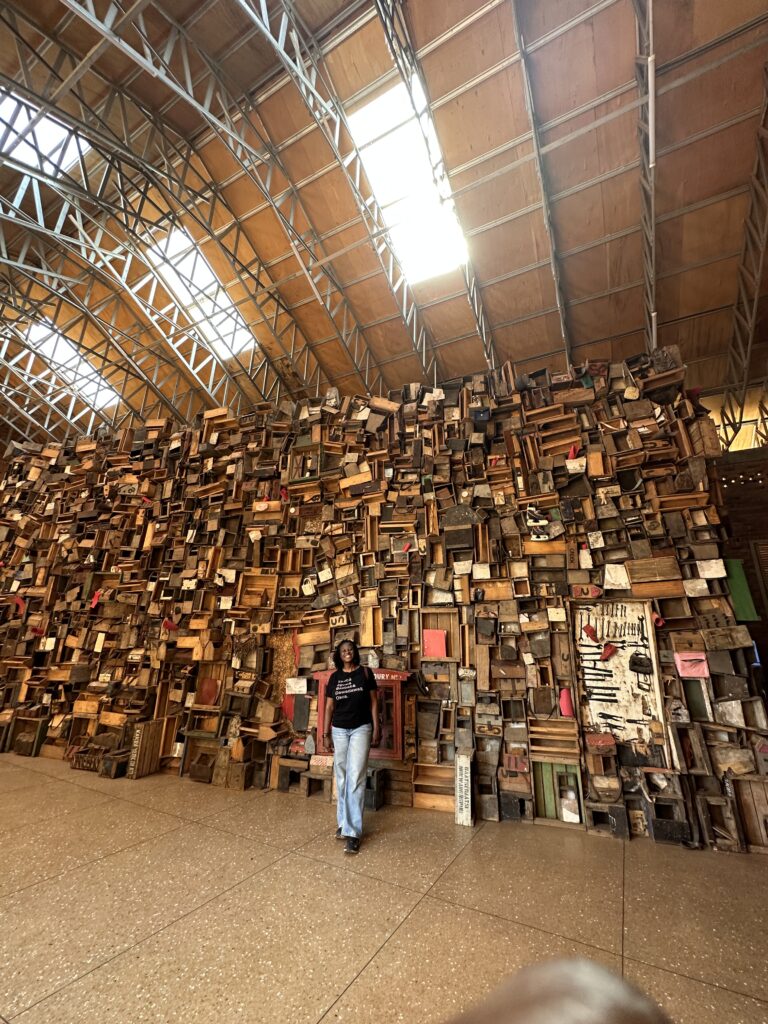

We took a late afternoon flight and returned to Accra by evening. The north was my favourite leg of the trip.
Organizing the trip to Northern Ghana
People and Places took care of my flights, transportation around Tamale as well as accommodation, which came out to 750 USD. I was responsible for the food I ate as well as any personal expenses. Flying to Tamale is the best way to go unless you want to take a 12-hour bus ride from Accra. I did separately book my class with Amina which was planned 72 hours before I got to Tamale; I believe it came out to 600GHC/~55USD. I appreciated the flexibility I had with my trip to Ghana as you do not need to plan too far in advance for certain things once you are in the country.
Tongo (Upper East Region)
My friend Abena is incredibly passionate about Indigenous foods and food systems in Ghana. As she works through her PhD in sociology focusing on empowering farmers to save indigenous seeds and preserve traditonal food systems, she stays in Tongo, a town 20 minutes away from Bolgatanga, the captial of the Upper East region. Here, in collaboration with Mama Hawa, offers opprotunities for groups to come and stay with Mama Hawa and her family in their lodge, Tongo Oasis, to immerse themsleves in Talensi (Fra Fra) culture.
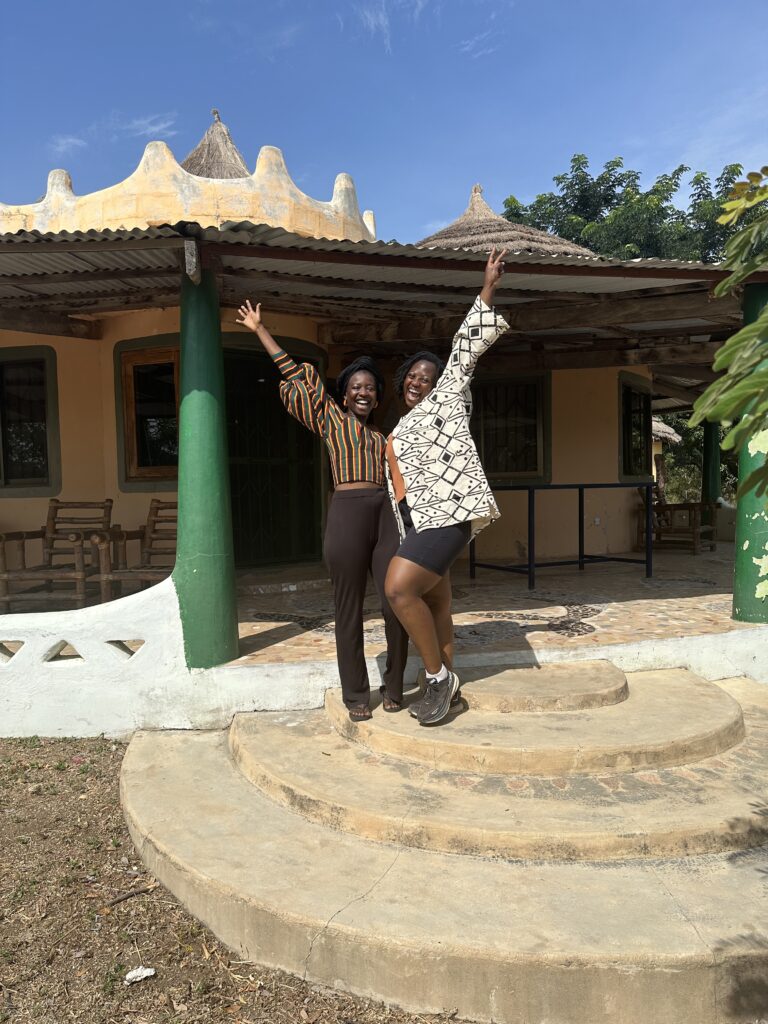
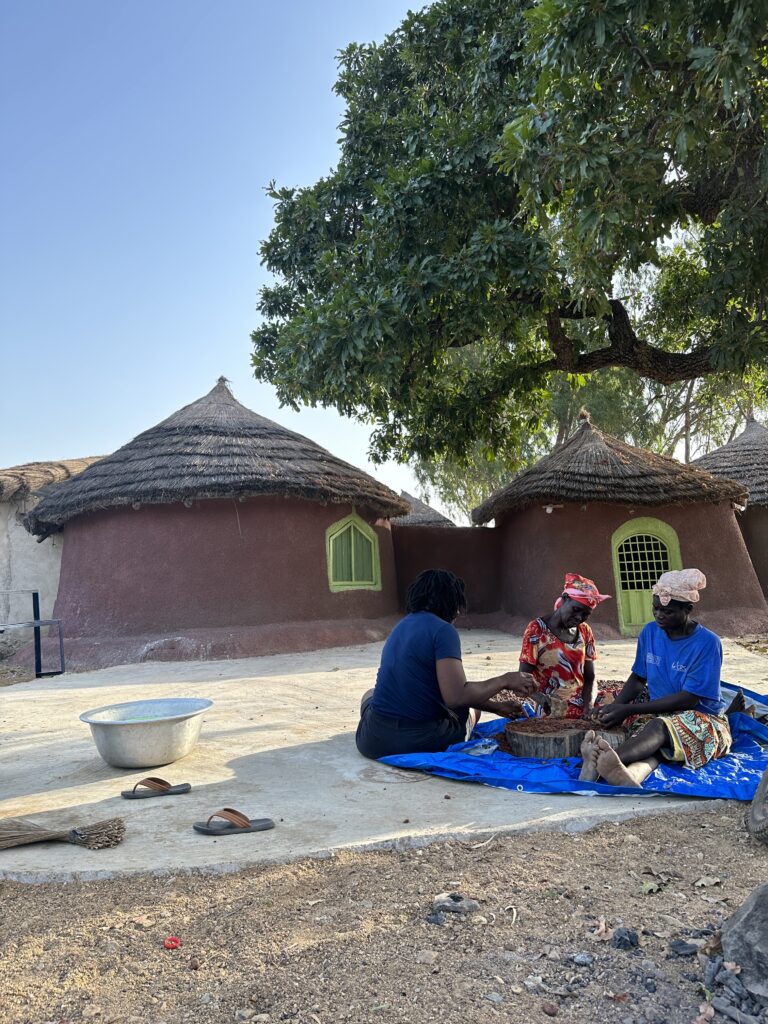
My trip was a bit of a unique situation as this opportunity is usually offered within the context of a group, which I am working with Abena to organize for this year. Stay tuned. Abena helped me plan the itinerary for my time in Tongo but getting in and out of Tongo was my responsibility.
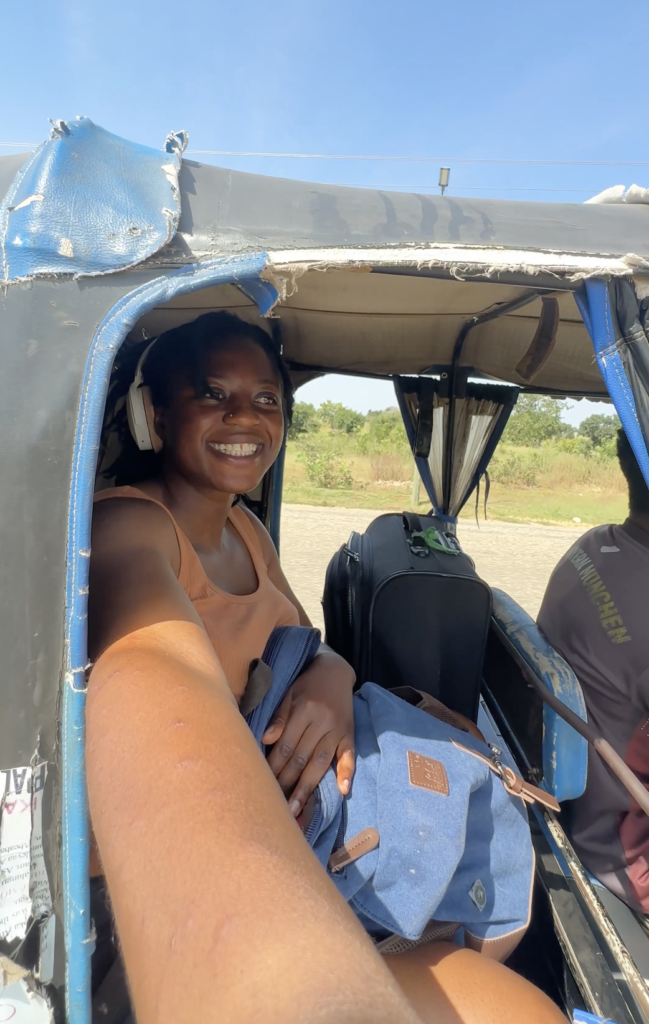
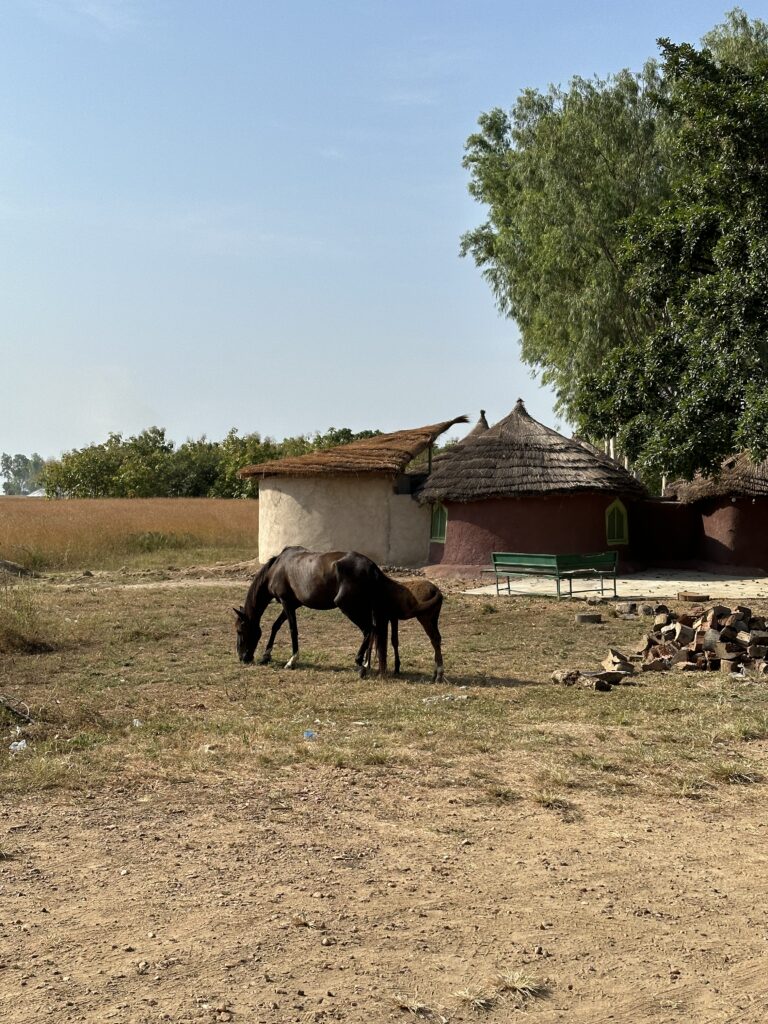
I flew to Tamale from Accra and then took the Bolgatanga shuttle from Tamale Airport to Tongo. This shuttle is fairly popular and the major way to get to and from Tamale airport, charging about 120GHC/8 USD. There are no commercial airports in Bolgatanga.
Tongo Oasis was built in a traditional Frafra home style with lots of natural light streaming in, clay walls, and traditional furniture. I felt so at home and really living out a lot of things I admired so much from social media.
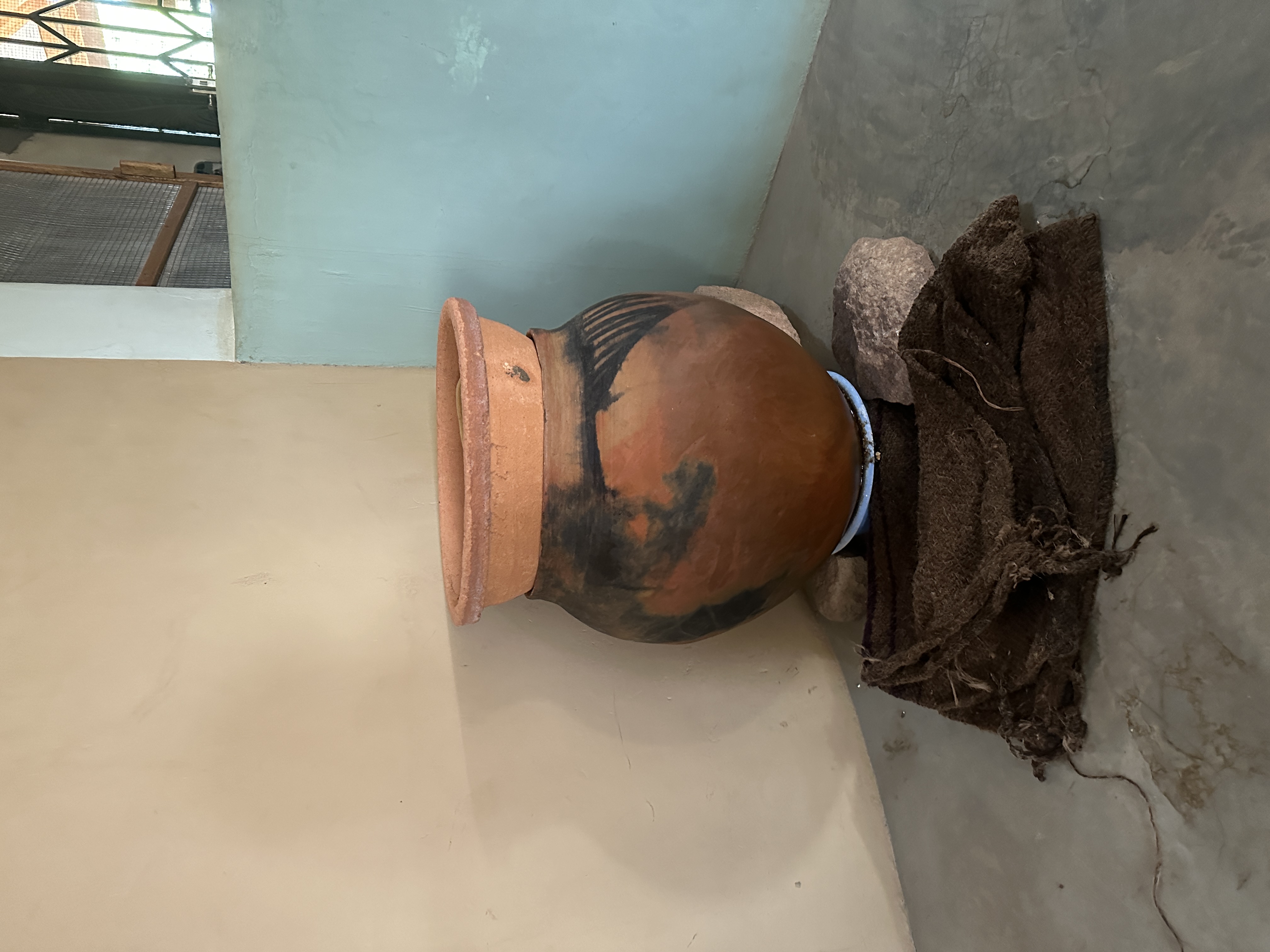
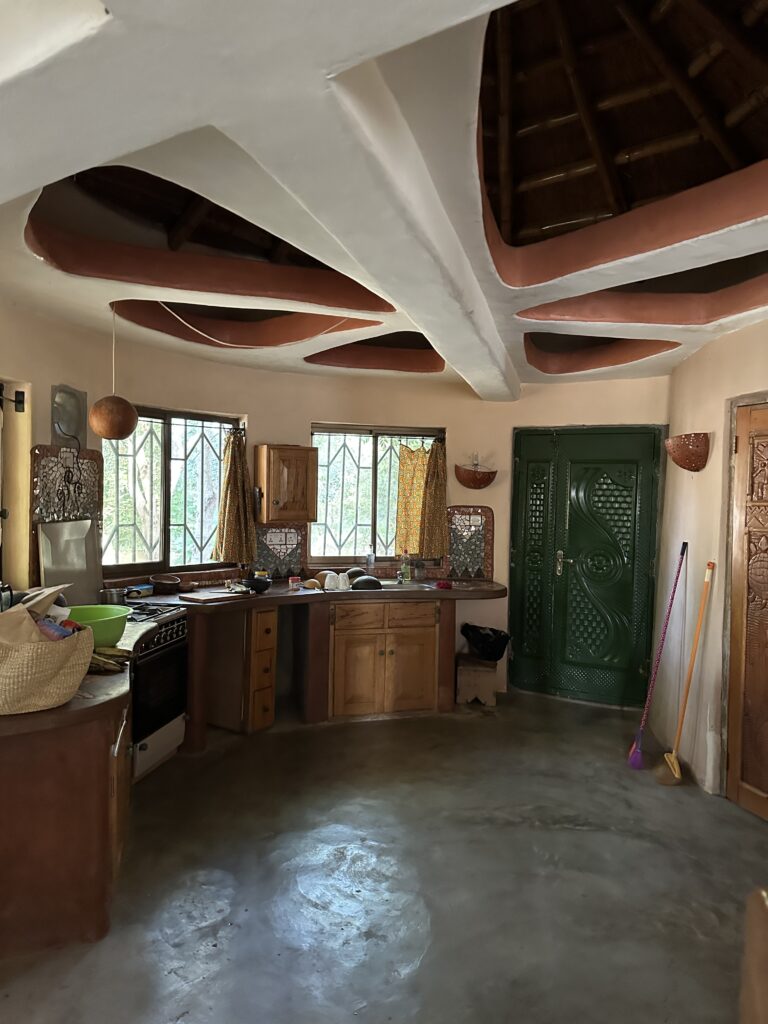
I learned a few recipes from Mama Hawa that used a lot of shea butter, indigenous spices, traditional millet, rice and fermented locust beans. Abena also organized an indigenous food workshop for me with one of the farmers she works with and that was 1 hour of pure joy. I got to partake in the making of shea butter, plenty of which I brought back with me to Canada and still use for my cooking, as well as the full process of making fermented locust beans. I visited the Bolgatanga market to get a look at what is available at the markets and purchased a fair bit of clay pots and bowls.
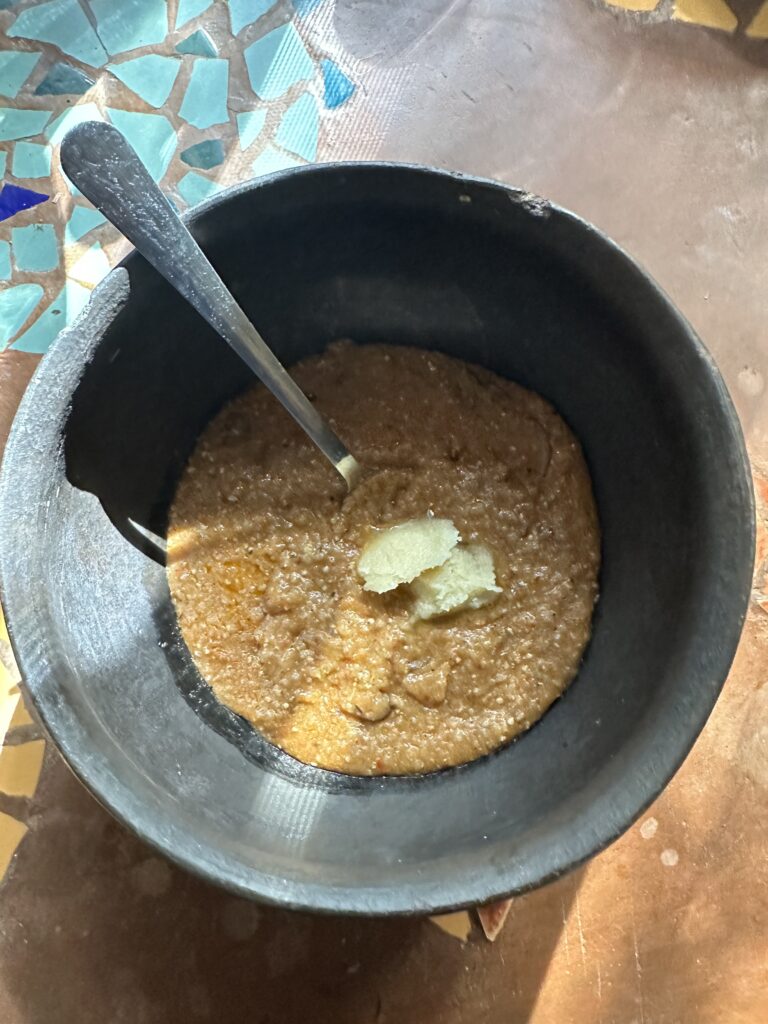
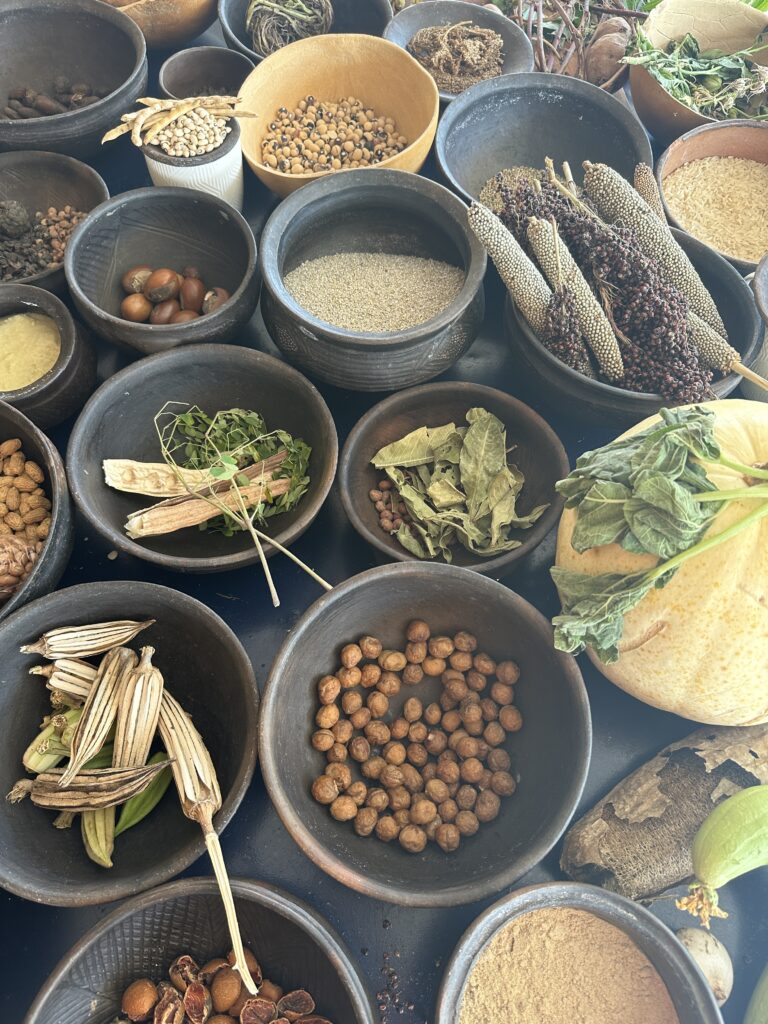
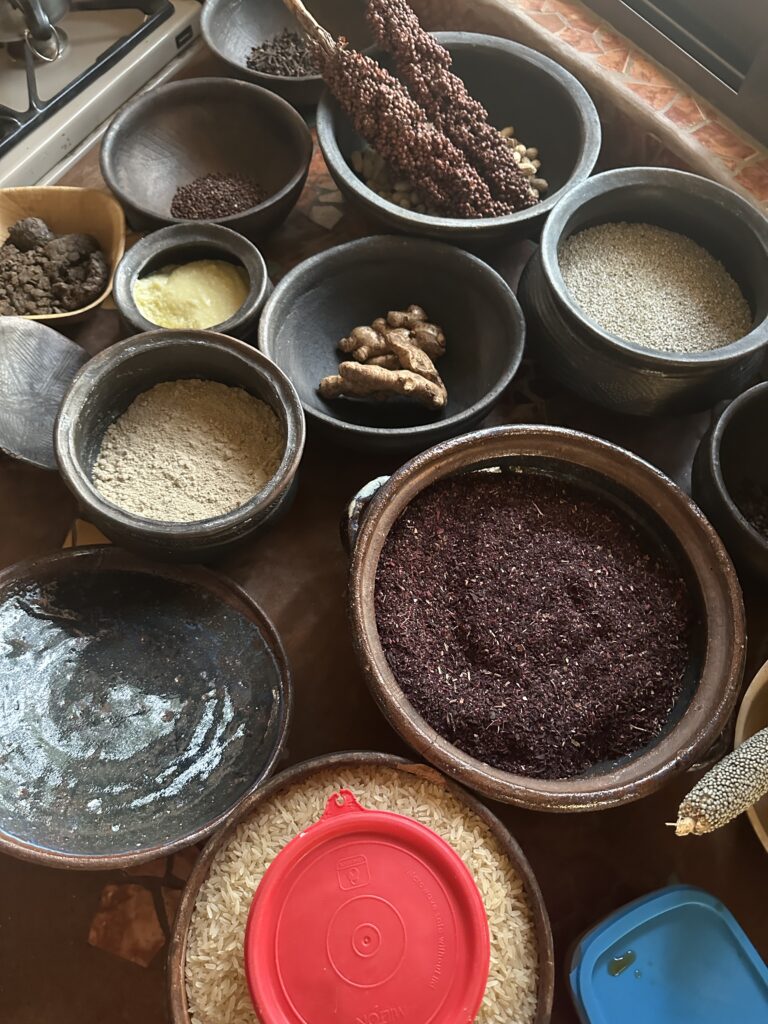
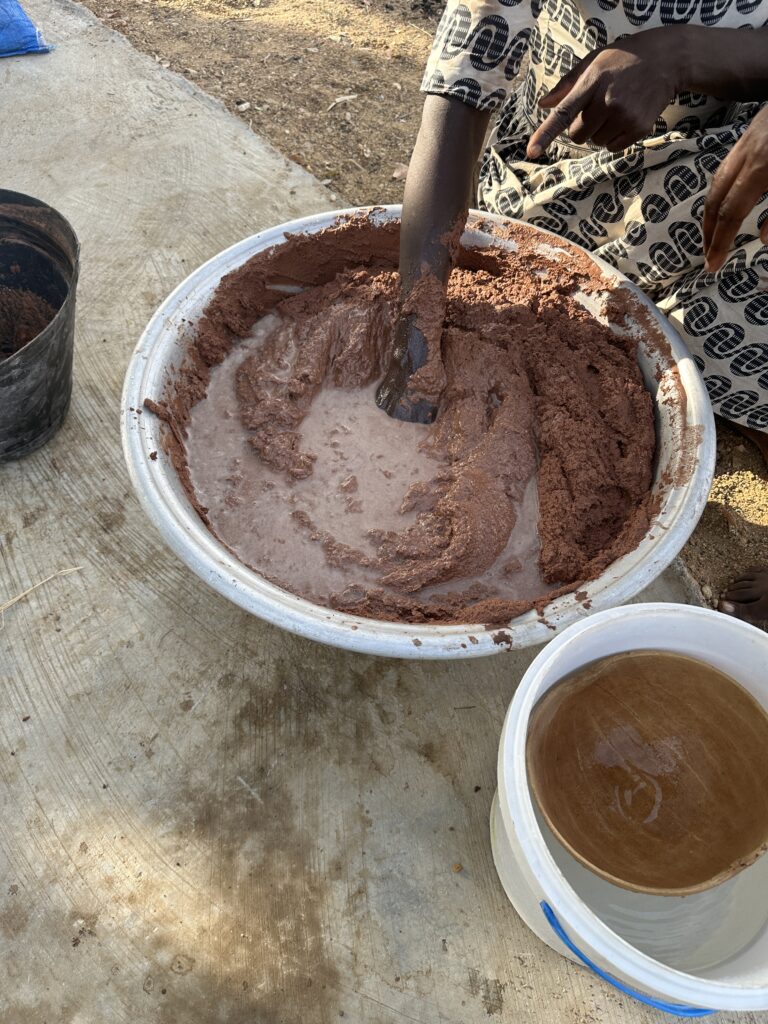

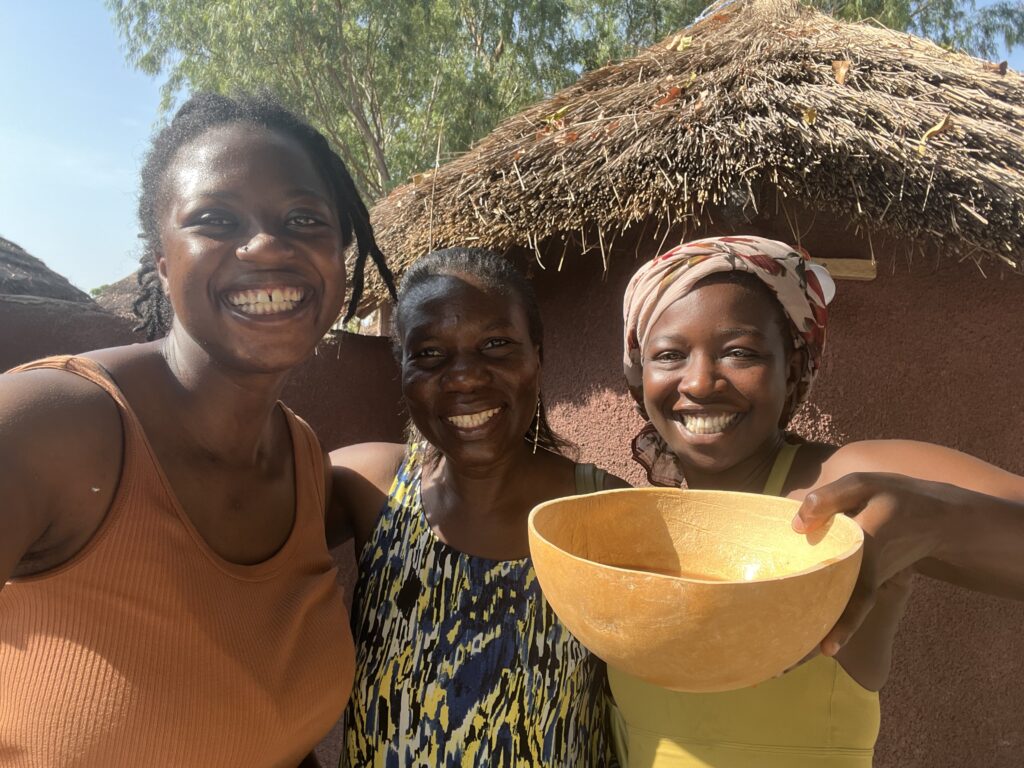
It was interesting to see very familiar foods found in Nima market in Accra but the difference between the renditions of these foods in the north vs the south is the audience. Northern food in the south is loaded with more meat because of the preferences of southern Ghanaians, where as they are a lot more simple in the north. Things that are made with millet in Tongo like Bengari, Tuo Zaafi or Masa are made with corn in the south. Zomkom found in Nima market is usually made with just rice, millet and ginger but in the north, you might get it as millet water made with red millet, spices and ginger. Zom (also a similar millet drink) in Tongo/Bolga is made with roasted millet, shea butter, tamarind and pepper. There is a lot of regional specificity but also trends that cut across the country. The trip to Tongo really allowed me to see the bigger picture of Ghanaian food (a diverse collection of food cultures that leverage indigenous ingredients and various methods, with lots of similarities and differences).
I will not be disclosing the price of this trip as it is not the norm. Our group trip planned for July will offer a similar itinerary for less than 1000 USD.

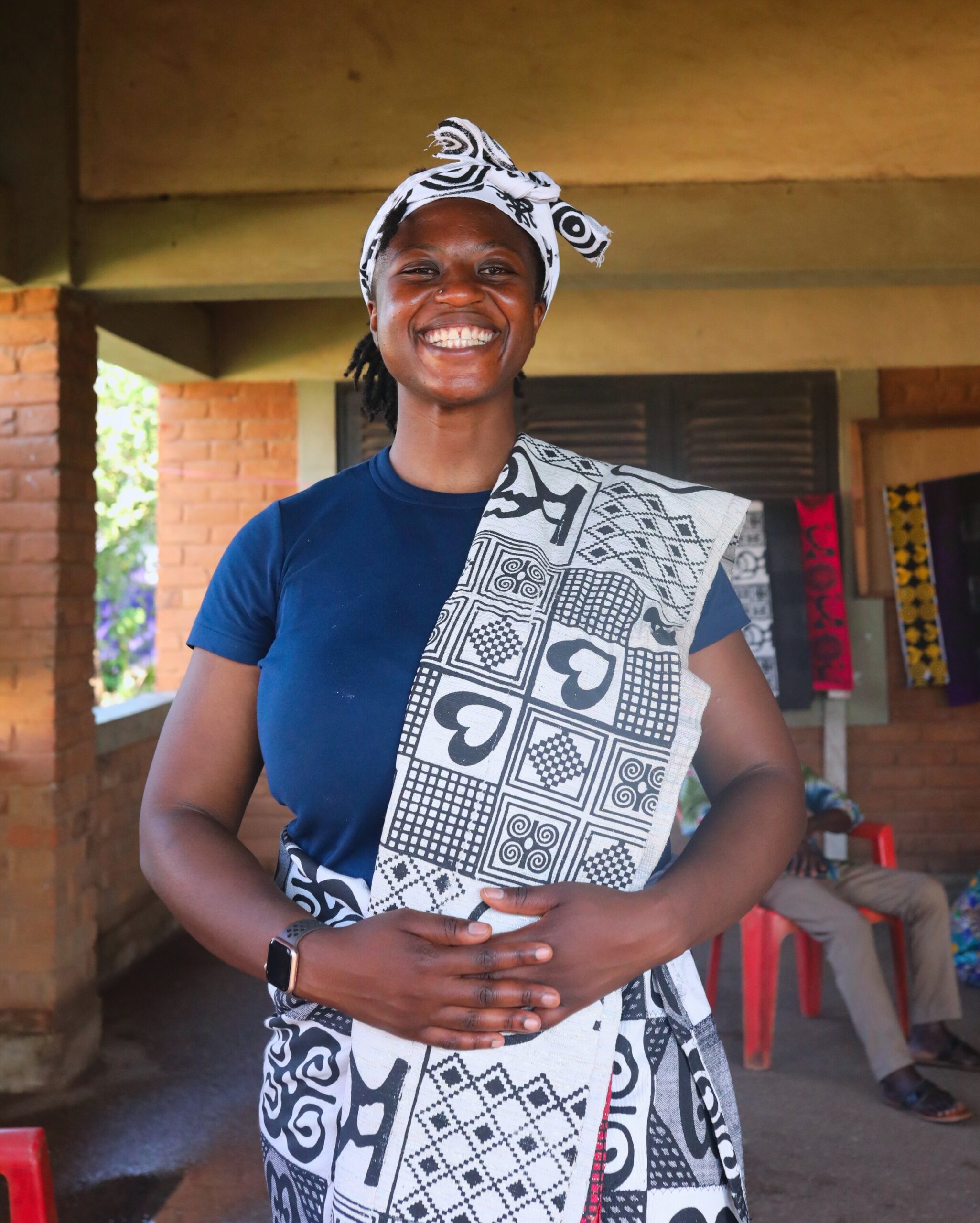
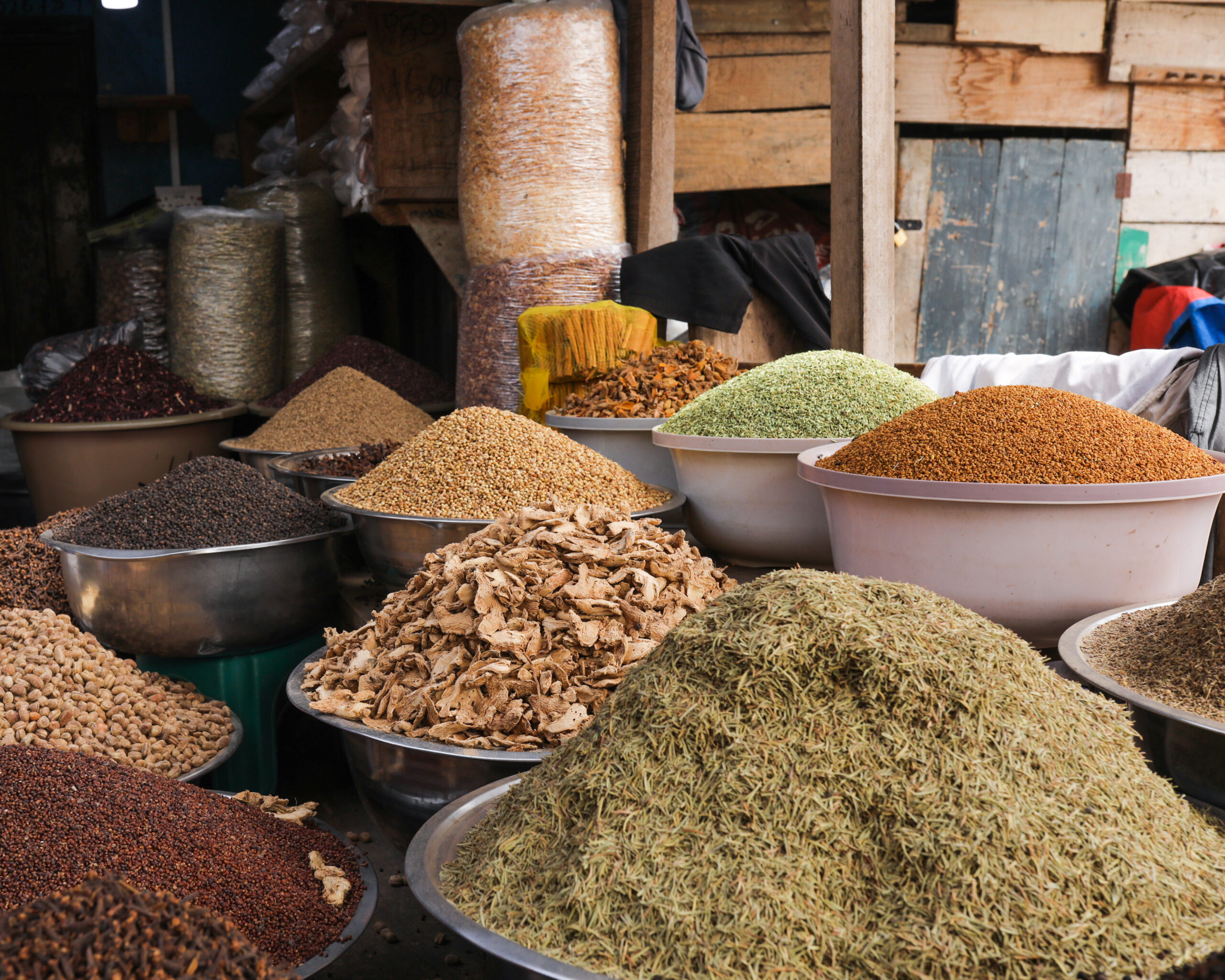
1 Comment
Oye
January 22, 2025 at 3:34 pmThank you for all of the details and knowledge shared in the blog and blog. Im planning to visit Northern GH and will be sure to reference what youve shared. Would also love to join on any future group journeies in GH
Thank You
O